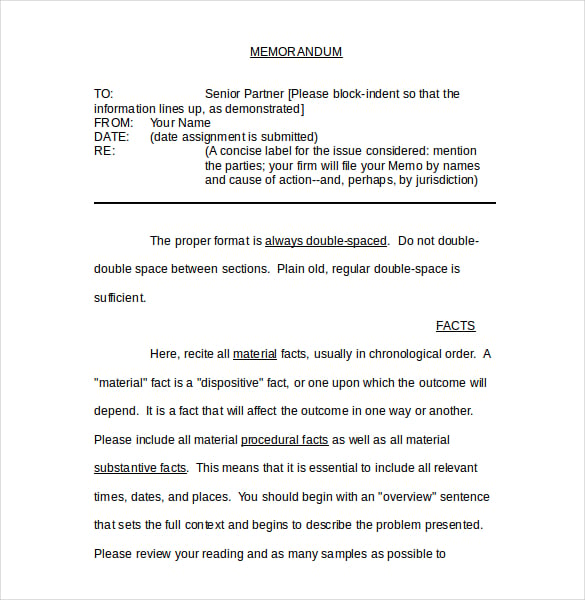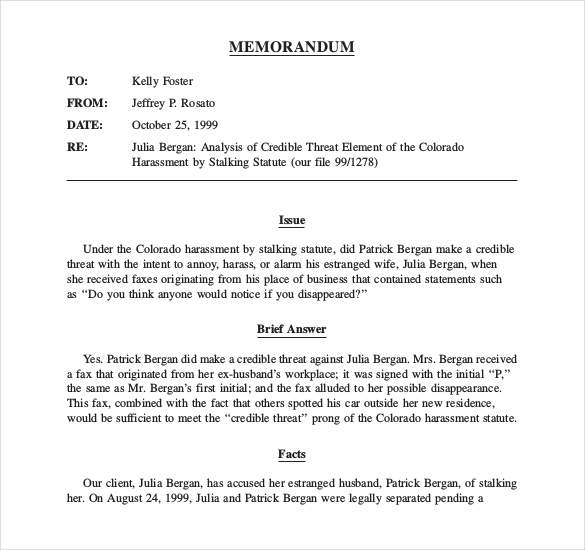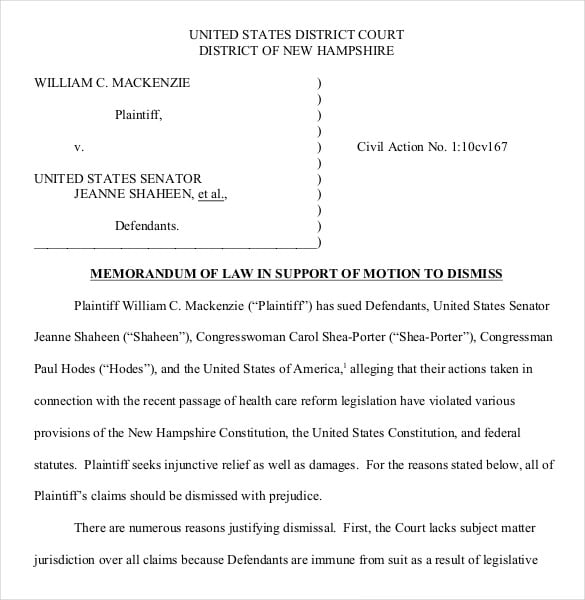
Legal research memos can come in many forms-from broad 50-state surveys to more nuanced research on a particular point of law-but whatever the format, it’s important that you fully understand the task entrusted to you before you start typing. With an impartial advisory tone, you identify next steps and propose a legal strategy to proceed. It predicts how the court will apply the law, and how confident you are in your prediction based on the data. The assigning attorney will likely read this section first. Several paragraphs outline the various legal topics to be addressed in the case and provide an analysis of the legal issues, usually ordered in subsections. Restates the main facts and delineates the overarching legal rule.

The facts can be chronological or grouped thematically, whichever format presents the facts in the clearest manner. Statement of factsĪ concise, impartial statement of the facts that captures the heart of the legal matter, as well as current and past legal proceedings related to the issue. Brief answerĪ quick-hit legal prediction to the question presented, based on a short (four to five sentences) explanation that references relevant law and facts. The question presented is specific and impartial and doesn’t assume a legal conclusion. Question presentedĪ brief one-sentence statement that defines how the law applies to the legal question at hand, and the jurisdiction where the matter will be decided. Heading or captionĪ section, titled, “Memorandum,” identifies the recipient (To: _), the author (From: _), the assignment submission date (typically in MMMM DD YYYY format), and subject of the memo (Re: _). Generally, a legal memorandum comprises six sections, with the following information: 1. With proper planning, law firm associates can maximize the odds of favorable reception at the outset.īloomberg Law can help you understand and apply legal issues to your legal memo assignment, so your final product addresses all relevant points right out of the gate. The legal memo is an assignment that law firm associates are frequently asked to provide to senior attorneys.įar too often, however, the assigning attorney takes one look at the result and replies, “I knew this already.” To prevent this outcome, it’s important to write a legal memo with sufficient understanding of audience, scope, purpose, and format. The legal memo is an objective memorandum that provides you the opportunity to review and research relevant case law, investigate relevant facts using available resources, analyze those facts under that law, and impartially assess the potential outcome of a matter. However, this should be adapted according to needs of the memo or the guidelines of your lecturer.What is the legal memo assignment? The following is a suggested model structure. The style should be formal and professional, and language and tone suitable for the recipient for example, avoid technical terms and legal jargon when writing for a client. See Eas圜ite for guidance on using AGLC4 referencing.Īlso, be aware of your reader as this influences the language you use to communicate your reasoning. Information on referencing can be found on the Learning Lab. Visit the Library's law and justice subject guide to access major Australian legal resources and help on searching them.Īcknowledge sources accurately to avoid plagiarism. Plan the document (content and structure)Įdit and review is it logical and clear? Undertake research using reliable authorative sources Identify the matters and any sub-issues to be discussed Identify the purpose according to the task At university, check the assignment brief and marking rubric to be clear about the task requirements.

Different lecturers and firms can have their own preferences even though the memo will contain the same elements. There is no one correct way to present your memo. Your memo should be well organised to reflect your analysis and reasoning. It is the culmination of your legal research. The memo summarises and analyses any relevant laws in relation to the facts of a particular situation. Legal policy: written for a political authority or organisation responsible for policy changepresents an argument in favour of the client's position


Letter to a client: presents the client's situation, focussing on potential actions and outcomes, often making recommendations about a course of action In-house document: written for a colleague or superior provides your assessment of the client's situation based on the facts of the case and current law They should be clear, concise and informative. All memos provide advice or legal opinion but can have different audiences or intended recipients. Legal memorandums that are written as assignments can take three forms: an in-house document, a letter to a client, or a paper on legal policy.


 0 kommentar(er)
0 kommentar(er)
